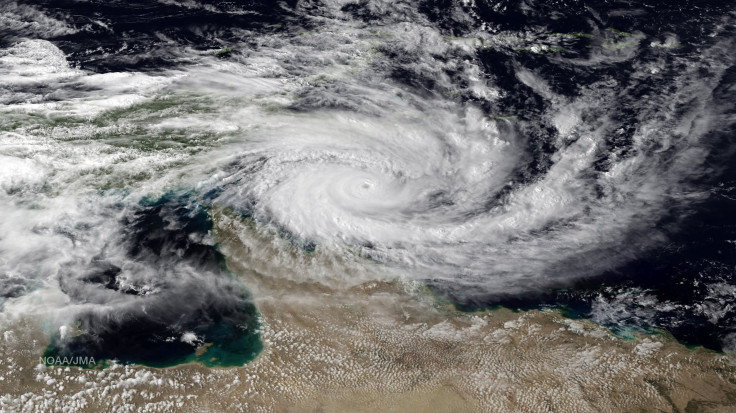Tropical Cyclones Shifting Toward Poles, Reaching ‘Maximum Intensity’ Farther From The Equator

The point of maximum intensity for tropical cyclones has been shifting toward the poles in both the northern and southern hemispheres over the past 30 years, increasing risks for people in heavily populated and underprepared coastal regions beyond the tropics, according to a new study led by the National Oceanic and Atmospheric Administration, or NOAA.
The study, published in the journal Nature on Thursday, revealed that the average latitude where tropical cyclones reach peak intensity has been migrating toward the poles since 1980 at a rate of about 35 miles each decade. As a result of this movement into higher latitudes, some regions closer to the equator may experience reduced risk while coastal areas poleward of the tropics may be more at risk from cyclone damage.
“Historical intensity estimates can be very inconsistent over time, but the location where a tropical cyclone reaches its maximum intensity is a more reliable value and less likely to be influenced by data discrepancies or uncertainties,” Jim Kossin, a scientist at NOAA and the study’s lead author, said in a statement.
According to researchers, the greatest poleward migration of tropical cyclones is found in the northern and southern Pacific and southern Indian Oceans. With their devastating winds and flooding, these powerful storms can endanger coastal cities that are not adequately prepared. At the same time, regions in the tropics that depend on the cyclones to help replenish crucial water resources may be at risk of going arid as storms migrate away from them.
Many other studies agree with the latest research findings and have pointed to an expansion of the tropics since 1980.
“The rate at which tropical cyclones are moving toward the poles is consistent with the observed rates of tropical expansion,” Kossin said. “The expansion of the tropics appears to be influencing the environmental factors that control tropical cyclone formation and intensification, which is apparently driving their migration toward the poles.”
According to scientists, such expansion can partly be attributed to the increase of greenhouse gases caused by human activity, ozone depletion in the stratosphere and increased pollution. However, researchers are yet to determine whether the poleward shift of a tropical cyclone's maximum intensity is also linked to human activity.
"Now that we see this clear trend, it is crucial that we understand what has caused it - so we can understand what is likely to occur in the years and decades to come," Gabriel Vecchi, a scientist at NOAA and the study’s coauthor, said in the statement.
© Copyright IBTimes 2025. All rights reserved.






















